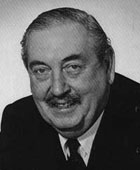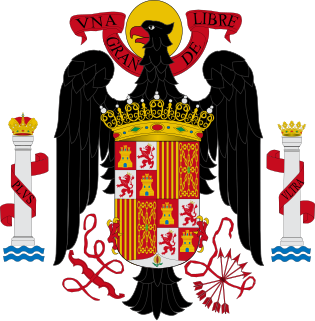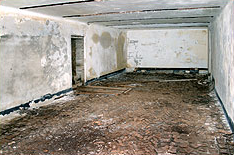 W
WFrom 1939 until January 1944, the intelligence services of Germany and Italy, with the assistance of the Spanish government, maintained a network of stations in the vicinity of the Strait of Gibraltar. The stations tracked the movements of Allied warships and merchant vessels and became a valuable source of intelligence to the Axis, for attacks on Allied convoys. The British Government considered attacking the stations on two occasions during 1942 but decided instead to use diplomatic pressure to have them closed. The stations are believed to have ceased operations in January 1944.
 W
WThe Decima Flottiglia MAS was an Italian flotilla, with commando frogman unit, of the Regia Marina created during the Fascist regime.
 W
WThe British Government's decision to enforce a mass evacuation of the civilian population during the Second World War from the Crown colony of Gibraltar, in order to increase the strength of The Rock with more British Armed Forces personnel, meant that most Gibraltarians were forced to be away from Gibraltar and did not have a place they considered to be home. Only those civilians with essential jobs were allowed to stay. However, this event gave the entire community a heightened sense of "Britishness" by sharing in the war effort.
 W
WHMS Evadne was a converted yacht, commissioned as a warship by the Royal Navy during the Second World War. She survives today as the yacht Marala.
 W
WOperation Felix was the codename for a proposed German seizure of Gibraltar during World War II, subject to the co-operation of Spanish dictator Francisco Franco. It did not happen, chiefly because of Franco's reluctance to enter the war. Hitler was unaware that his own envoy, Admiral Wilhelm Canaris, head of the Abwehr, was running a secret resistance movement and liaising closely with Franco by specifying particular terms that Hitler was certain to refuse. This ensured that the negotiations would fail.
 W
WForce H was a British naval formation during the Second World War. It was formed in 1940, to replace French naval power in the western Mediterranean removed by the French armistice with Nazi Germany. The force occupied an odd place within the naval chain of command. Normal British practice was to have naval stations and fleets around the world, whose commanders reported to the First Sea Lord via a flag officer. Force H was based at Gibraltar but there was already a flag officer at the base, Flag Officer Commanding, North Atlantic. The commanding officer of Force H did not report to this Flag Officer but directly to the First Sea Lord, Admiral of the Fleet Sir Dudley Pound.
 W
WBrigadier Sir Richard Gambier-Parry, was a British military officer who served in both the army and the air force during World War I. He remained in military service post-war, but then entered into civilian life for more than a decade. In 1938, he was recruited by the head of the Secret Intelligence Service. Gambier-Parry led the Communications Section of the SIS during World War II, and assembled a clandestine wireless network that connected the United Kingdom with SIS agents in many countries, as well as helping to create the SIS resistance network in Britain. During the war, he was also recruited by the Director of British Naval Intelligence to serve as the radio consultant for Operation Tracer in Gibraltar. Post-war, he ran a network of secret listening stations.
 W
WThe Mediterranean U-boat Campaign lasted from about 21 September 1941 to 19 September 1944 during the Second World War. Malta was an active British base strategically located near supply routes from Europe to North Africa. Axis supply convoys across the Mediterranean Sea suffered severe losses, which in turn threatened the fighting ability of the Axis armies in North Africa. The Allies were able to keep their North African armies supplied. The Kriegsmarine tried to isolate Malta but later it concentrated its U-boat operations on disrupting Allied landing operations in southern Europe.
 W
WThe military history of Gibraltar during World War II exemplifies Gibraltar's position as a British fortress since the early 18th century and as a vital factor in British military strategy, both as a foothold on the continent of Europe, and as a bastion of British sea power. During World War II, Gibraltar served a vital role in both the Atlantic Theatre and the Mediterranean Theatre, controlling virtually all naval traffic into and out of the Mediterranean Sea from the Atlantic Ocean.
 W
WNo. 200 Squadron of the Royal Air Force operated during the First and Second World War. The squadron was first formed in mid-1917 and during the First World War, it undertook a training role, before being disbanded in mid-1919. It was re-formed in 1941, and operated maritime patrol aircraft firstly from the United Kingdom, and then west Africa until early 1944 when it moved to India. In April 1945, the squadron was disbanded, having been renumbered No. 8 Squadron RAF.
 W
WThe auxiliary ship Olterra was a 5,000 ton Italian tanker scuttled by her own crew at Algeciras in the Bay of Gibraltar on 10 June 1940, after the entry of Italy in World War II. She was recovered in 1942 by a special unit of the Decima Flottiglia MAS to be used as an undercover base for manned torpedoes in order to attack Allied shipping at Gibraltar.
 W
WThe Silent Enemy is a 1958 British action film directed by William Fairchild. It stars Laurence Harvey as Lionel "Buster" Crabb and describes his exploits during World War II. Based on Marshall Pugh's book Commander Crabb, it was made following the publicity created by Crabb's mysterious disappearance and likely death during a Cold War incident a year earlier. It was the first Universal Pictures film in SuperScope
 W
WDuring World War II the Spanish State under Francisco Franco espoused neutrality as its official wartime policy. This neutrality wavered at times and "strict neutrality" gave way to "non-belligerence" after the Fall of France in June 1940. Franco wrote to Adolf Hitler offering to join the war on 19 June 1940. Later the same year Franco met with Hitler in Hendaye to discuss Spain's possible accession to the Axis Powers. The meeting went nowhere, but Franco would help the Axis — whose members Italy and Germany had supported him during the Spanish Civil War — in various ways.
 W
WOperation Torch was an Allied invasion of French North Africa during the Second World War. The French colonies in the area were dominated by the French, formally aligned with Germany but of mixed loyalties. Reports indicated that they might support the Allies. American General Dwight D. Eisenhower, supreme commander of the Allied forces in the European Theater, planned a three-pronged attack on Casablanca (Western), Oran (Center) and Algiers (Eastern), then a rapid move on Tunis.
 W
WOperation Tracer was a secret Second World War military operation in Gibraltar, a British colony and military base. The impetus for the plan was the 1940 scheme by Germany to capture Gibraltar, code-named Operation Felix. Operation Tracer was the brainchild of Rear Admiral John Henry Godfrey, the Director of the Naval Intelligence Division of the Admiralty.
 W
WHMS Wishart (D67) was a Modified W-class destroyer of the British Royal Navy that saw service in World War II. She spent most of her wartime career based at Gibraltar, engaged in convoy defence, but also served in various naval and military operations in the Mediterranean Sea.